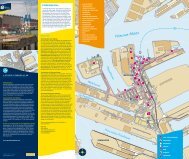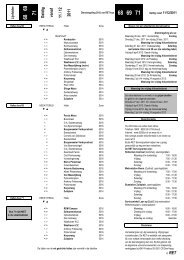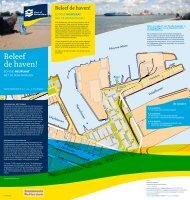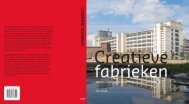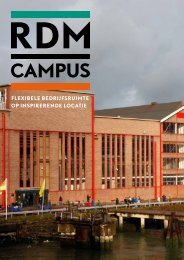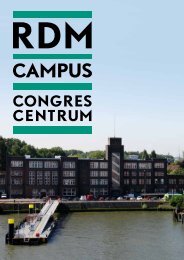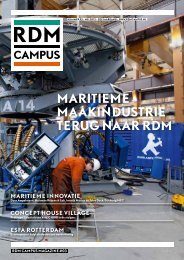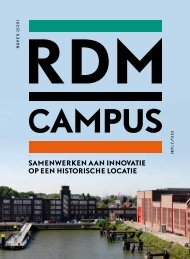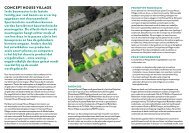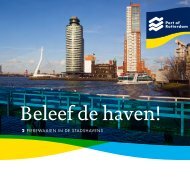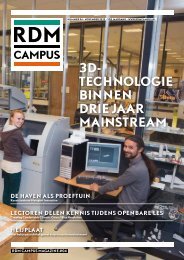20 <strong>Creating</strong> <strong>Comfortable</strong> <strong>Climatic</strong> <strong>Cities</strong>21<strong>Creating</strong> <strong>Comfortable</strong> <strong>Climatic</strong> <strong>Cities</strong>local energy production potentials and finding alternative biobased solutions forsynthetic plastics.Figure 5.OIL AND GAS LIQUIDSGlobal Oil and Natural Gas Liquids Production (The Association for the Study of Peak Oil and Gas,2004 SCENARIOC.J. Campbell, 2004) [Doepel Strijkers, 2012]Billion barrels a year (GB/a)353025201510501930 1940 1950 1960 1970 1980 1990 2000 2010 2020 2030 2040 2050US-48 Europe Russia other middle eastheavy etc. deepwater polar NGLSOURCE: THE ASSOCIATION FOR THE STUDY OF PEAK OIL AND GAS, C.J. CAMPBELL, 2004Energy poverty – Opportunities for designA rise in energy costs affects everyone, but especially the poor and people living farfrom amenities. In the early 1990s, Boardman (1991) used the term ‘fuel poverty’ in herpublication From Cold Homes to Affordable Warmth. More recently, the term ‘energypoverty’ has arisen to describe the point at which households spend more of theirdisposable income on energy than on rent. This phenomenon is already evident in theNetherlands. In 2011 it was estimated that approximately 300,000 households in thesocial rented sector spend more that the acceptable norm of 38% of their disposableincome on energy. Currently, 850,000 households are above the ‘energy poverty’borderline. Translated into percentages, 17% of social sector renters are above theacceptable norm and 5% spend more money on energy than on their monthly rent(Croon, 2012) (see Figure 6).The agenda for the architectural service industry is clear. A major energy renovationof the existing stock is needed, all new developments should be ‘energy neutral’ or‘energy plus’, and local potentials for renewable energy production and reuse ofwaste streams should be maximised.Figure 6.RELATION ENERGY & ACCEPTABLE LIVING EXPENSES IN SOCIAL RENT 2011Relationship between acceptable living costs in the social rented sector; 5% of households spend more on300.000 TENANTS SPEND MORE THAN ACCEPTABLE NORM OF 38% OF INCOME ON ENERGY (ORANGE)energy bills than on rent (Croon, 2012) [Doepel Strijkers, 2012]850.000 TENANTS ABOVE ENERGY POVERTY THRESHOLD€ 3.000€ 2.500€ 2.000€ 1.500€ 1.000€ 5001.000500€ 0 010 17,5 25 32,5 40 47,5 55 62,5 70 77,5 85 92,5 100% HOUSES (calculation ref. 1950 ground based, 110m 2 , 3 pers)SOURCE: CROON, 2012remaining acceptable income rent & taxes per month energy costsabove acceptable residential quote gas usage per yearM 3 gas5.0004.5004.0003.5003.0002.5002.0001.500According to Croon (2012), a short-term opportunity in the social rented sector is toretrofit 120,000 individual units each year. By linking the rent and energy costs, thetotal cost to renters remains the same, while the savings from energy reductionsover a fifteen-year period are invested upfront in energy reduction measures. Thechallenge is to retrofit a house in three days to A++ energy label standard, with anaverage investment of approximately €45,000. As the acceptable pre-investmentvaries per typology and is affected by aspects such as the age of the buildings andpredicted extension of their lifespan, a tailor-made strategy must be developed foreach user group and housing typology, and the logistical aspect of when to intervenemust be defined. The development of innovative and affordable retrofit solutions isessential if we are to counter this social economic challenge.Resource depletionAccording to the World Wide Fund for Nature (Loh et al., 2006), sometime in the 1980sthe rate of consumption of global resources exceeded the capacity of the earth toregenerate itself by 25%. Over the past decades the global rate of consumption hasincreased dramatically as the world population has grown exponentially, especiallyin China, India and Asia. Translated into space, mankind is using 1.5 times the naturalrenewable resources of the planet; if we proceed in this manner, by 2050 we will needthe equivalent of three planets to meet our needs.Besides the unsustainable patterns of consumption, there is a huge discrepancy inthe distribution and consumption of resources. Based on 2006 data from the GlobalFootprint Network and the corresponding 2003 CIA World Fact Book, Jerrad Pierce(2007) depicted the current global resource consumption per country and per capitain a single map (see Figure 7). In a world where resources are equally shared, each
22 <strong>Creating</strong> <strong>Comfortable</strong> <strong>Climatic</strong> <strong>Cities</strong>23<strong>Creating</strong> <strong>Comfortable</strong> <strong>Climatic</strong> <strong>Cities</strong>inhabitant would have an eco-footprint of 1.8 global hectares (Wackernagel and Rees,1996). The map illustrates the imbalance between rich and poor counties, the poorestcountries being well below the average and Northern countries like the Netherlandswell above 4 and up to 12 global hectares per inhabitant (the top two are the UnitedArab Emirates and the USA).Figure 8A and 8B.Closing city cycles – Circular City Metabolism [Doepel Strijkers, 2009]8A. Linear City MetabolismFigure 7.Global resource consumption per country, per capita [Jerrad Pierce, 2007]8B. Circulair City MetabolismResource efficiency – Opportunities for designReuse and recycling of materialsDesigners and architects can play an important role in averting resource depletionby specifying the right materials for a building or product. Every choice a designermakes when specifying materials has an effect on resource depletion and the habitatof other living species, so knowing where materials come from is an essential designskill (Faud-Luke, 2009). Resource efficiency represents an enormous opportunity for theentire service sector. Besides existing strategies such as Cradle to Cradle (McDonoughand Braungart, 2002), innovative concepts such as Cirkelstad aspire to connect resourceefficiency and a circular economy at the regional scale (see http://www.rotterdamcirkelstad.nl). Harvesting and reusing materials from demolition and waste streams fromproduction processes keeps materials in the region, thereby reducing dependencyand environmental pressure elsewhere (see Figure 8A and 8B). By explicitly includingpeople in a reintegration process in all phases of the strategy, from demolition to theproduction of new building materials and construction itself, this concept has positiveenvironmental and economic effects, as well as social returns.In 2009 this principle was tested in an interesting pilot project. The HAKA RecycleOffice in the Merwe-Vierhavens area of Rotterdam is a concept that illustrates howthe strategy of closing material cycles at the city scale can be translated to the interiorof a building (see Image 6A, 6B, 6C and Figure 9). The ambition was to go further than justreducing the CO 2footprint through the reuse of materials by integrating the socialcomponent into the project. A team of ex-convicts in a reintegration programme wereengaged to build the objects, making the project more than just an example of howwe can make an interior from waste. It creates added value through empowermentand education.



